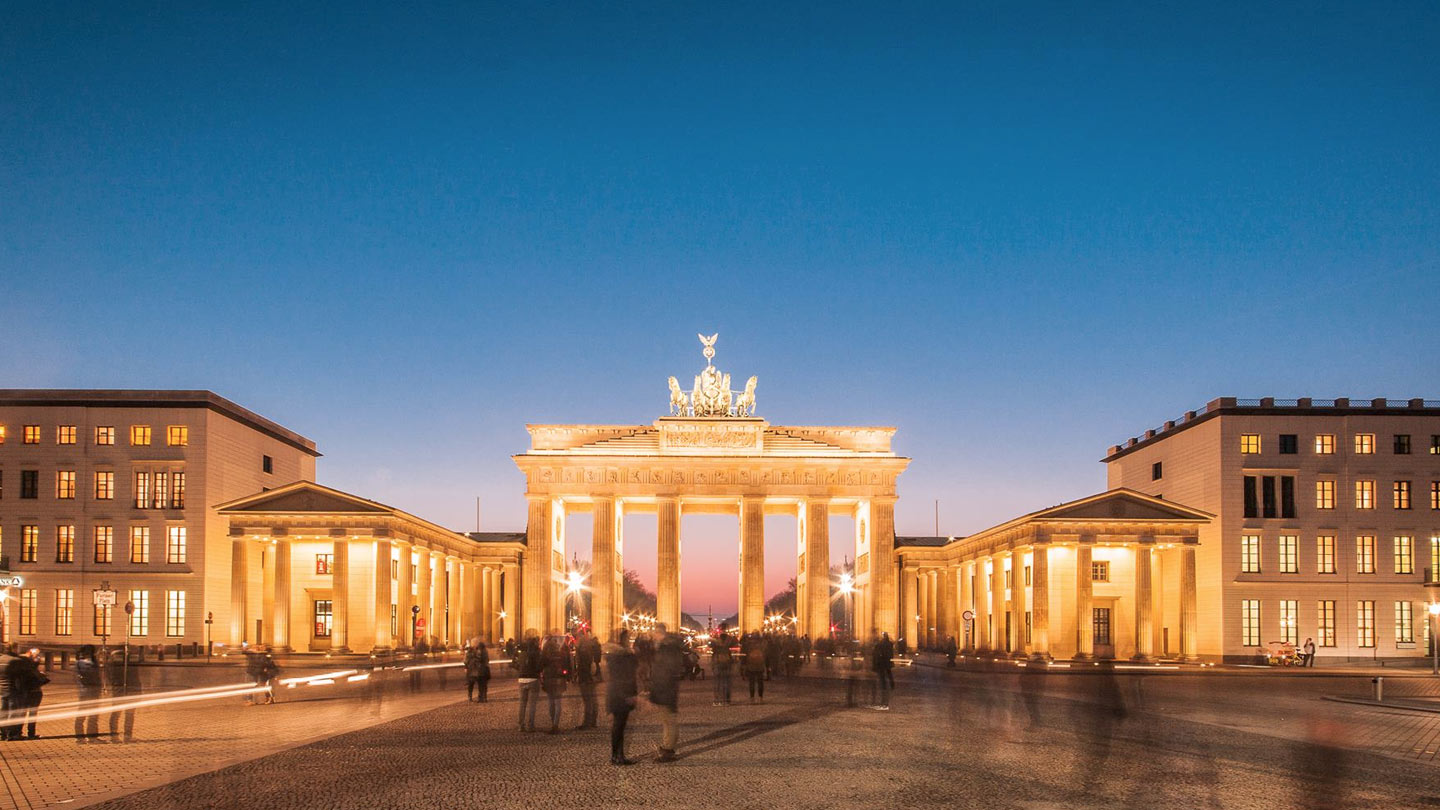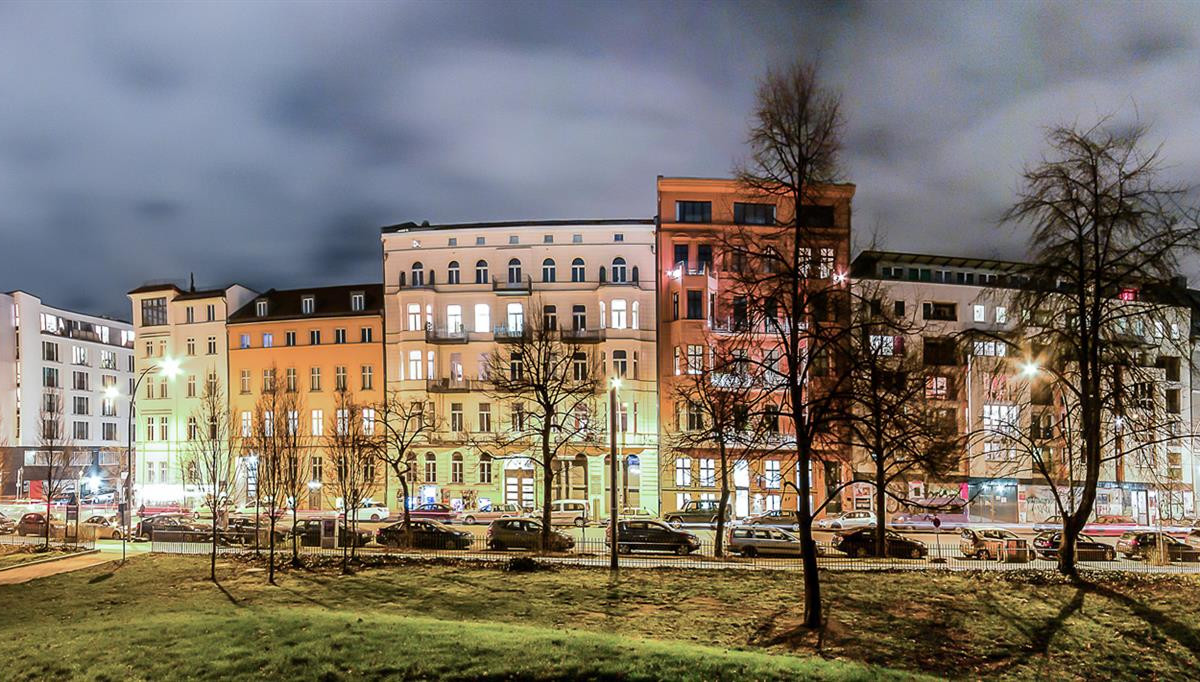Berlin-Mitte
The Center of the Capital

Subdistricts
“Where do you live?” – “In Berlin-Mitte.”
The raised eyebrows and appreciative murmurs that usually follow this response are known to every resident of Berlin-Mitte. Quite simply, Berlin-Mitte ("Mitte" means "middle" or "centre" in German) is the most famous district of the German capital and serves as an ambassador throughout the world for the new, open and culturally diverse Federal Republic of Germany.
This Berlin-Mitte should not be confused with the Berlin-Mitte formed by the administrative reform of 2001, though, which also includes the boroughs of Wedding and Tiergarten. We are only talking about "Mitte" proper here, the center of Berlin that is confirmed by historical documents and lay unnoticed at the edge of the GDR capital until the fall of the Berlin Wall.
The borough of Berlin-Mitte, which was only founded in 1920, is a combination of several neighborhoods and quarters. Berlin-Mitte comprises Fischerinsel (Fisher Island), Museumsinsel (Museum Island) and Alt-Berlin (Old-Berlin) along with the Nikolaiviertel (Nicholas' Quarter), the Friedrichswerder, Dorotheenstadt, Friedrichstadt, Luisenstadt, and Stralauer Vorstadt neighborhoods, and is also home to Alexanderplatz, the Spandauer Vorstadt district containing the Scheunenviertel (Barn Quarter), and the Friedrich-Wilhelm-Stadt, Oranienburger Vorstadt and Rosenthaler Vorstadt quarters. The magnificent Unter den Linden boulevard belongs to Berlin-Mitte too, as does Pariser Platz with the Brandenburg Gate, the Hackesche Höfe courtyard complex, Friedrichstrasse, Torstrasse, the cathedral, the television tower, the Rotes Rathaus (Red Town Hall), the Gendarmenmarkt square, many of the city's main museums and the spectacular Holocaust memorial to the Jewish people murdered during the Third Reich.
Mitte means governance
This is where almost all the government employees, observers or movers and shakers live. The Reichstag parliament building, the Office of the Federal Chancellor, the Berlin House of Representatives, media authorities and the main railway station are all located nearby. Even the German Chancellor lives in Mitte, in a small house near Museumsinsel.
Mitte means nightlife
The best restaurants can be found in and around Torstrasse. Some have gained cult status – such as the "Grill Royal", "Pauly Saal", "Bandol sur Mer" and "The Grand" or the extremely trendy restaurant "Cordo" (former "Cordobar" wine bar) – and you have to book days in advance to get one of the highly prized tables. Mitte is also home to some of Berlin's coolest bars, including the legendary "Tausend" bar, as well as "Reingold" and "Buck & Breck" where a new and very serious cocktail culture is currently being pursued. The relaxed "Amano Bar" in the hotel of the same name is worth a mention too, as well as the late-night establishment "Bravo", a formerly small snack bar where crowds now pack in until the early hours to await whatever – or whoever – the evening still has to offer.
Mitte means history
Berlin-Mitte is home to government buildings from several eras. Yet this lends something unique to the borough as these buildings also capture the essence of a history comprising a century of growth, a decline, a division and a new beginning. Berlin is a city that has been severely blighted by history, even ill-treated by it, in fact. For a few years now, though, Berlin has been living up to the vision started by another generation of Berliners in the riotous 1920s – a vision of a cosmopolitan, liberal, buzzing and also somewhat showy Berlin, but always one with a twinkle in its eye. That's why Berlin's center shines so brightly now.

Berlin-Mitte is not large, but it houses almost all the buildings from the time of the Fredericks and Wilhelms, the kings and emperors who cobbled together the capital of the Prussian kingdom. After its demise came the Weimar Republic with its highly charged and fun-loving center – an era that can still be relived today in "Clärchens Ballhaus", a dance hall where nostalgia defies modernity. Mitte contains buildings from the National Socialist era, too. These buildings have not been demolished or altered, because Berlin is coming to terms with its past and does not hide it. This is something that is also typical for Mitte – with one exception, however, as the old City Palace is now being rebuilt on the site where the Palace of the Republic once stood.
Mitte means culture
The Berliner Ensemble and the Deutsches Theater, two of the most important theatres of the German-speaking world, are located on and around Schiffbauerdamm. Mitte is also home to the Volksbühne and Maxim Gorki theatres along with the Berlin State Opera, and the Komische Oper Unter den Linden is a crowd-puller, too. The museums in Mitte are also legendary: The Museumsinsel, for instance, hosts the "New Museum" housing the bust of Nefertiti, the "Old National Gallery", the "Bode Museum", which is famous primarily for its sculptures, and the "Pergamon Museum" with its spectacular finds from the Ancient Near East and Antiquity.
Mitte means living
People love to live in Mitte, either in the quiet district around Schiffbauerdamm which stretches to Karlsplatz, or in the lively Scheunenviertel quarter that ends at Alte Schönhauser Strasse, containing trendy fashion boutiques enticing people to shop. Apartments are much sought-after in Mitte, rents are high, property here is a safe investment. Mitte also has a few micro-locations, streets that sit perfectly within their surroundings like the beautiful Sophienstrasse or the area around Steinstrasse, Mulackstrasse and Gormannstrasse. Havens like these are not known in any other major European city.
"At the heart of everything" is a phrase that suits no place better than Berlin-Mitte. No other global city center has such a variety of different quarters that collectively present a cohesive whole. Berlin has so much diversity in a relatively small space – a diversity that compliments our capital city, and makes us really stand out.










